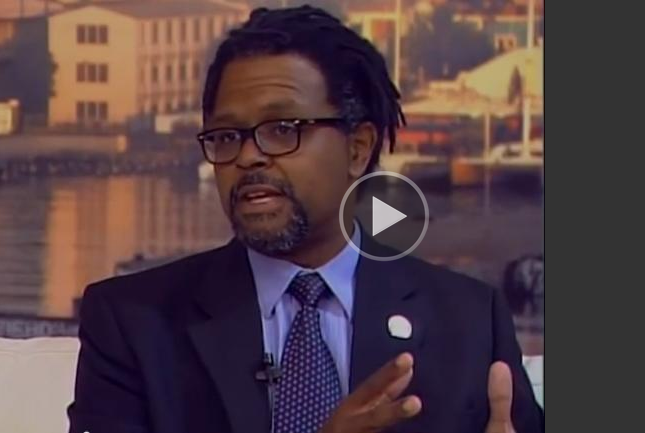HOYA Clinic Serves as Model for Antigua’s New Student-run Clinic

Posted in GUMC Stories
JANUARY 23, 2015—In February, when the Free Clinic at English Harbour opens its doors to the residents of Antigua, in the Caribbean, a cheer will be raised about 1,800 miles away at the HOYA Clinic in the old D.C. General hospital building.
That’s because Antigua’s Free Clinic is based on Georgetown’s HOYA Clinic model — an unusual concept in medical education where medical students run all aspects of the clinic, with faculty oversight.
Most medical school student clinics are much less hands-on, but that is not what Deborah Robinson-Akande, DDS, FAGD, chairman of the University of Health Sciences in Antigua, envisioned. The University’s students study medicine for the first two years on Antigua and then travel to the U.S. or other countries for the final two years of medical school. Robinson-Akande felt the HOYA Clinic model would better prepare the island students for their study abroad.
But more than that, island residents have been asking for a clinic there ever since the old clinic in English Harbour closed three years ago. Plans are for the Free Clinic to serve the nearly 5,000 residents of English Harbour, Falmouth, Piccadilly, Cobbs Cross, Bethesda and Liberta.
“It is our hope that the Free Clinic will be an extension of the Medical/Nursing school into the community. Because our community lost its community health center a few years ago, The Free Clinic will play a major role in the health care of the community in which we are located,” says Robinson-Akande.
“It is also our hope that the Free Clinic will serve as a major provider of patient education as well as being a provider of various health care activities. This will be a major opportunity for the school to give back to the community that we have grown to love and have been a part of for over 30 years,” she says.
A Medical Home for the Community
Word of the new clinic spread like wildfire on the island when Robinson-Akande and two Georgetown faculty — Benjamin Walker, PhD, and Vikki Fackler, RN — appeared together in July on the TV show Good Morning Antigua (see video below). Walker andFackler served as advisors to Robinson-Akande and her colleagues as they worked towards the new clinic’s opening.
“We were stopped in the street, in our hotel, at restaurants — everyone wanted to talk about this clinic. They were very excited, and we are so pleased,” says Walker, assistant dean for diversity and inclusion at Georgetown School of Medicine. “We hope the clinic becomes a medical home, of sorts, for the community.”
“It was lovely to be so readily accepted by the islanders and to see the look of anticipation for the clinic on their faces,” says Fackler, HOYA Clinic’s nurse coordinator.

Shared Commitment to Underserved
Robinson-Akande learned about the HOYA Clinic in September 2013 at the annual meeting of the National Association of Medical Minority Educators from a poster presentation by HOYA medical students. There she met Walker and their conversations continued after the meeting, culminating in Akande’s visit to Georgetown and the HOYA Clinic several months later.
The seven-year-old HOYA Clinic is located on the fourth floor of a homeless shelter in Washington, and offers care to the underserved community two nights a week, along with a third night and occasional weekend hours. The goal is to empower individuals with the knowledge needed to improve their own health and enhance their well-being.
There are numerous parallels between the HOYA Clinic and the Free Clinic at English Harbour, including a commitment to treating the disadvantaged and providing tailored, community-specific care, says Walker. Providing a venue to educate both students and patients is equally important, he adds.
“At the HOYA Clinic, the level of patient engagement and assessment is excellent. The patients are very well taken care of. Students take ownership of the care,” says Eileen Moore, MD, the clinic’s medical director, and associate dean for community education and advocacy at Georgetown’s School of Medicine.
“It’s very exciting that HOYA Clinic is being used as a model for Antigua,” she says.
Fulfilling the Georgetown Mission
During her visit, Robinson-Akande accompanied Fackler on a walking tour of the HOYA Clinic and observed how the clinic functions in real time. She and Walker then traveled to Antigua to help with the organizational aspects of the Free Clinic, including structural design, patient flow, administration, etc., sharing what Moore calls “our best practices.”
Dr. Robinson-Akande conducts regular virtual meetings with Walker and Fackler to review and discuss current and future clinic plans. Fackler is also working closely with nurses who will be volunteering their time at the clinic.
Both Fackler and Walker say working with the university in Antigua was extremely rewarding.
“I have dedicated my heart and soul to the functioning and maintenance of the HOYA Clinic because I so firmly believe in education, public health and the provision of quality health care for all,” Fackler says. “Setting up a HOYA model in Antigua has been an amazing venture — one that I am sure will produce good fruit for the island.”
As Walker puts it: “An organic conversation with Akande just blossomed into a wonderful idea — a way that Georgetown could help and fulfill part of our mission — serving the underserved.”
By Renee Twombly
GUMC Communications
